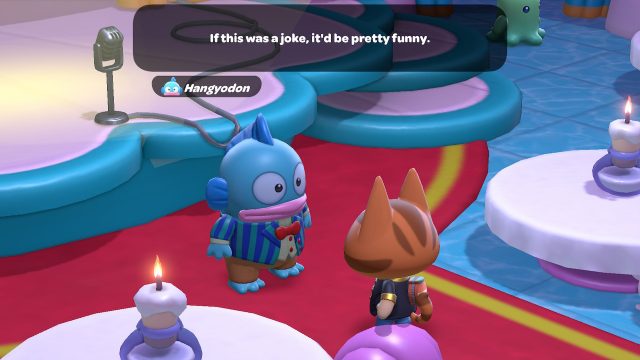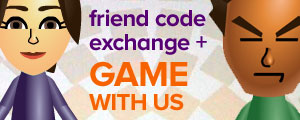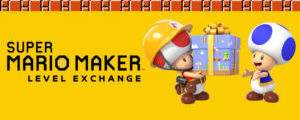Respect for Sanrio history and character lore; Massive island to explore with surprising (and literal) depth; Fun minigames with prizes you actually want; Solid homage to Animal Crossing-style gameplay without just being a 1:1 copy
Game takes hours to ramp up before it feels like you have a lot to do; Way too many vague, unexplained game mechanics; Lazy mobile-to-console port includes mobile features that should've been changed for console; Sunblink's iron-fisted policy on no time travel is overkill; Outsized focus on the same four characters that Sanrio keeps pushing in their merchandise and marketing
Back in 2006, South Park’s now-classic episode, Make Love, Not Warcraft, hit airwaves and cemented itself as one of the most loved and most memorable episodes of the series. At one point, Butters reveals that his game of choice isn’t WoW, but Hello Kitty Island Adventure, a game which was purely fictional when he referenced it. Then 2023 came, and Sanrio and Sunblink announced an Apple Arcade exclusive of the exact same name that had people asking: was this a nod to South Park or purely coincidental?
I’m sad to say that per Jill Koch, Sanrio’s SVP of Marketing, Sales, and Business Development, the name was purely coincidental (though I find that a little hard to believe…). But I’m glad the game is real, because as both a Sanrio and Animal Crossing fan, this game is right up my alley. However, it’s not without its pain points.
First things first: if you’re looking to scratch the itch that Animal Crossing: New Horizons has left in its wake now that the game has gone years without any updates, this might be a good option for you. I say “might” because if you’re not a Sanrio fan, you really won’t be able to appreciate all of this game’s content and might be wondering why certain characters or details are relevant. Island Adventure really is primarily for crossover fans of both Sanrio and Animal Crossing.
If you’ve played New Horizons, a lot is going to seem familiar to you when you boot up Island Adventure. So much so, I was slightly put off when I first started playing, worried that this was going to just be a lazy knockoff of something already done so incredibly well, just with a Sanrio veneer painted over it. And it took quite a number of hours of gameplay for my opinion to change for the better.

One way in which Island Adventure differentiates itself from Animal Crossing is that, while there’s an in-game day and night cycle, it doesn’t coincide with the real world clock. Multiple days and nights will cycle through in a real-world 24-hour period, with the only impact on the in-game world being that some creatures only come out in the morning, day, or night, and some characters will be in different locations depending on the time. However, like Animal Crossing, the game does update once per real-world day, which is 11:00 pm PT for me where I’m located in the world.
This is the same time that Nintendo mobile games like Mario Kart Tour and Animal Crossing: Pocket Camp Complete update for me, as well, but it felt strange for this game. It makes sense that in New Horizons, the new in-game day updates in the real-world morning and the in-game day/night cycle matches up with ours. It was odd to have multiple days and nights pass in Island Adventure but not have content update until so late in the evening, with a cheerful My Melody welcoming the start of a new “day.”
This isn’t the only mobile carryover that felt out of place in a console game and, frankly, like Sunblink was too lazy to consider how to do anything but a 1:1 mobile-to-console port. For example, there’s no in-game manual. The Support feature is just a short statement directing you to join the game’s community Discord server for questions and gameplay help, or to use their Send Logs feature and to email Sunblink support for technical issues. This game has a big issue with giving the player vague directions and little to no info, including:
- Providing no legend to decipher the game’s extensive use of symbols. Characters can be gifted three items daily and they all have preferences for the types of items they want, represented by symbols listed in their character info (i.e. a strawberry to indicate they like fruit or fruit-based food). There is no explanation for any of these. I’m still unclear on what most of them represent because they’re unintuitive and most of the items/materials I can either collect or craft at this point still don’t belong to any of those item types.
- Telling the player they got an upgrade to an amenity (oven, pizza oven, etc.) or a friend ability and then providing zero explanation as to what the upgrade was.
- Not explaining what player abilities even are or how to use them and expecting the player to discover them on their own.
- Giving no explanation for how the gifting system works and hoping the player will catch on. It’s easy enough — gifts are ranked from 1-3 hearts and the more hearts an item has, the happier it’ll make the friend and the more it’ll increase their friendship meter. But that was something I had to intuit on my own.
- Little insight into what Nulls are or why you’d want to interact with them. These featureless green blobs live on the island and, in most cases, don’t speak. You can give them all sorts of hats and headpieces to wear. And they serve no purpose. Why? I don’t know, Sunblink didn’t feel it was necessary to contextualize them beyond “they live on the island, man the shops when the shopkeepers step away, and some of them run the island minigames.”
One of the most baffling examples of “just let them figure it out” that I experienced was during the process of decorating cabins. Much like in Animal Crossing, you’re given a tiny home of your own to decorate. (Unlike Animal Crossing, very few of the items in your home can be interacted with and just exist to look nice.) I expected to be able to put small objects and especially food on top of tables. When I was in decorator mode, moving objects around the room, I couldn’t place anything on top of tables. For days, I thought this game just made the bizarre decision to not let players put objects on tables. I finally decided to see if I was missing something and I found a Reddit thread from a mobile player who said they finally figured out that you have to walk up to a table, interact with it, and a menu will pop up showing you which items in your inventory can be placed on the table.
Why? Who thought this was the better solution than just letting the player place the item on the tabletop while they’re decorating the rest of the room?
The premise of the game starts with a plane malfunction which strands the player and a plane full of Sanrio all-stars onto a resort amusement park island which had long been abandoned until recently. Unfortunately, in a lot of ways, the player is left to fend for themselves much in the way their avatar is because of Sunblink’s odd decision to explain very little outside of the story. Luckily, it wasn’t too complicated figuring out the basic gameplay mechanics. But it was disappointing realizing that certain features, like friend abilities, were something I hadn’t been using for a while and could’ve (and should’ve) been had they been clearly explained from the start. Like if I knew Hello Kitty’s Everyone’s Friend ability grows friendships 10% faster, I would’ve had her glued to my side as I worked to increase my friendship levels with everyone.

Increasing those friendships is crucial: some quest lines, main storylines, and amenities only become available when friendships with certain characters reach certain levels. Your character also has a stamina wheel exactly like Link’s in Breath of the Wild and Tears of the Kingdom, except that it runs out in seconds and is virtually useless until you upgrade it. The items you need to increase that wheel are limited and many are only available by leveling up friendships.
While Island Adventure is unpolished in some ways, it becomes more and more addicting the more you play it and as more of the island becomes available to you. The game is a slow burn; it took days for me to really feel like I had a substantial number of things to do. But once I did, I couldn’t put it down. Exploration becomes easier once you start to increase your stamina wheel and get the ability to dive, destroy boulders, and fish. The stamina wheel isn’t the only thing borrowed from Zelda, either — if you liked shrines, you’ll like the Island Adventure equivalent.
These ancient rooms, scattered all over the island, function exactly like shrines (and have a very similar aesthetic), with puzzles to solve for rewards in the end. Some puzzles are simple while others were genuinely difficult to figure out, but the rewards didn’t always match the effort. It was satisfying getting a rare piece of furniture after a particularly frustrating puzzle but disappointing when it was a chest full of sticks or bags of flour. The resort’s minigames provide another opportunity to win furniture and other prizes, and they’re genuinely fun to play. Some even provide a good challenge.

The island itself is really large and the ocean, fully explorable under the waves, is vast and even extremely deep in some parts. I was so appreciative of the game’s fast travel system, which made so many tasks and daily gifting much easier. Characters are placed all around the island, and it would’ve been way more tedious having to travel on foot from the swamp to the beach to the mountains to the ocean and on and on just to see everyone every day.
I loved the variety of microclimates and locations on the island, but I do wish the game had a real weather system. Your in-game phone has a weather app, and the weather hasn’t been any different any day that I’ve been playing. Every day is the same sunny forecast, which made me wonder why Sunblink bothered providing a weather app if the weather was never going to be any different. Perhaps this is something they plan to utilize in the future, but I do wish I was seeing rainstorms, cloudy days, etc. to mix things up a bit.
This game’s crafting mechanic functions very similarly to New Horizon’s, with a workbench and tons of things to make with a variety of raw materials. It’s fantastic that the game lets you craft multiple at once. And no, your tools don’t break when you use them — thank you, Sunblink. There’s also a cool recycling feature, where you can feed a giant underwater sea plant bags of trash and virtually everything you can find or craft in exchange for dyes to dye clothing, seeds to plant coral, and rare keys to unlock special chests around the island.
There are three main shops: Hello Kitty’s cafe, Tuxedo Sam’s clothing store, and My Melody’s furniture store which is named Small Gift, Big Smile in a nice homage to the tagline used in Sanrio stores. Available clothes and furniture switch out daily, but the selection is a little underwhelming, especially at My Melody’s store. I keep seeing the same handful of items rotate in and out, and there’s no catalog to rebuy past purchases. So if you want another of those dining chairs you bought a couple days ago, you’ll just have to wait until they come back around again. There are multiple furniture sets, but even after a couple of weeks of exploring, leveling up friends, and seeing what’s new in the shop, I’m close to completing only three of them.
My Melody will let you know when a visitor wants to stay at the island, but they’ll only drop by if you can outfit a cabin with furniture and items that meet their exacting demands. However, as I mentioned earlier, items each have a type, so if you don’t have furniture that matches the type they’re looking for, they won’t visit. So the limited furniture availability can pose a problem here.

For all the Sanrio fans reading this, they’re likely wondering: how much Sanrio fan service does this game have? A lot. Be prepared for side quests that play into each character’s personality traits, which have been clearly established in Sanrio lore over the decades. From Aggretsuko’s rage-filled karaoke to Pochacco’s fitness obsession to Pekkle’s love of dance and more, Sunblink did a good job of pulling from Sanrio’s history and writing characters with personalities that match. The game’s main story ends with a reveal of a character that I couldn’t believe they included and it made me indescribably happy. It’s a spoiler I really do not want to spoil, and the Sanrio obsessed like myself will get a ton of joy out of it.
However, I worried that modern Sanrio’s fixation on Cinnamoroll, Pompompurin, My Melody, and Kuromi would influence this game and I was right. The list of currently available or soon-to-be-available island visitors pulls almost entirely from those four characters’ friends and family and I rolled my eyes hard when I was looking at the list. What about Keroppi’s siblings? The Badtz Twins? Pekkle’s girlfriend? Why are the characters’ pets and sidekicks, like Pochi, Den Den, Sayuri, and so many others nowhere to be seen? There is so much opportunity for this game to really dig into the Sanrio history we love and not just play to the same handful of characters that are big for Sanrio marketing right now.
I had a couple of performance issues playing this game. There were the occasional moments where the game would stutter, then pause for a good second or two, and then continue on. Sometimes when speaking to characters, they’d face the wrong direction, or they would have to walk to just the right spot before the dialogue would start. The static camera — another mobile carryover — made exploration awkward at times and especially when underwater. However, one of my biggest gripes with this game, and one of the most significant factors contributing to the lower score, is because of Sunblink’s policy on “time travel.”

New Horizons players are familiar with the practice of turning off the Switch’s clock sync and then manually changing the console’s date and time. Maybe you wanted to check the daily offerings at Nook’s Cranny but got out of work after they closed. For various reasons, players of these games often like to mess with time. Sunblink doesn’t like that, and in an announcement delivered to the in-game phone’s email app, the developer made it clear that “time manipulation breaks the game.” Doing so will permanently brick your save file, meaning:
- You’ll lose access to multiplayer
- Time-based functionality (daily items spawning, events progressing, etc.) won’t work retroactively
- And there’s nothing Sunblink can do about it once it’s in this state
Apparently naturally moving into a different time zone won’t cause this to happen. I emailed the Sunblink PR rep and asked if manually changing the Switch’s clock for another game, booting up that game, exiting the game, syncing the clock again, and then booting up Island Adventure would brick a save file. Her response was that “adjusting the clock when the game is closed, as long as it it reset to real time, should not trigger” any of the aforementioned consequences.
I personally think this policy is overkill and while I understand Sunblink would prefer people play their game the way they intended, I think it’s nuts to say “and if you don’t, we’re permanently compromising your file.” I think it would be fair if, say, the game could sense that the Switch’s clock wasn’t synced and refused to start until it was. There have to be other solutions that are less heavy-handed than this to combat player behavior Sunblink dislikes.
Island Adventure is far from perfect, but it’s also a genuinely fun experience that, when it gets things right, it gets them very right. I wouldn’t have put 60 hours into this game if I wasn’t having fun with it. But at the same time, if I’d written this review with 20 hours of gameplay, I likely would’ve given it a lower score. As I said before, it really takes a while for Island Adventure to get going and for a substantial amount of quests and content to unlock. And even some of the very first quests you’re introduced to can’t be completed until after days of gameplay, milestones are hit, and other quests are completed first (despite being introduced much later). Patience is key with Island Adventure, but it’s well worth the wait. This is, hands down, the best licensed Sanrio game I’ve ever played and there’s a ton of opportunity to improve on the more middling aspects with future updates. But for now, it’s a fun experience for Sanrio and Animal Crossing fans that’s worth diving into.
Nintendojo was provided a copy of this game for review by a third party, though that does not affect our recommendation. For every review, Nintendojo uses a standard criteria.




 ShareThis
ShareThis





